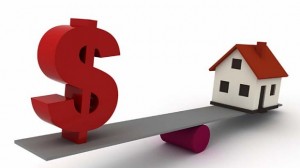The Difference between Negative and Positive Gearing
With the Sydney property market in particular presenting a wealth of investment opportunities, the terms positive and negative gearing are becoming more and more prevalent.
Verbatim, negative gearing is where an asset (Normally Property) is purchased with borrowed funds and fails to generate gross income that exceeds the total cost of owning and operating that asset or a situation where:
Total cost of operating the asset > Income from asset
Conversely positive gearing is where an asset (Normally Property) is purchased with borrowed funds and succeeds in generating a gross income that exceeds the total cost of owning and operating that asset or a situation where:
Income from asset > total cost of operating the asset
Not only at face value are positive and negative gearing different but so too are they in the way that financial planners and real estate investors alike employ them into their investment strategies.
Positive gearing is primarily used as an investment strategy to create a second source of income. Since positively gearing as an asset like an investment property will generate a positive cash flow the investor is essentially able to profit of ownership of the property hence increasing their income. However, for this strategy to succeed a property must offer high rental return as in general the income generated through rent does not exceed the costs associated with owning and renting property.
On the other hand negative gearing plays a significantly dissimilar role. As a general rule, property with capital gains potential will have low rental returns. This means holding and renting these types of properties for a sustained period of time in order to extract a worthwhile capital gain can incur a significant loss. This is where negative gearing comes into play as any loss made on an investment property is fully tax deductible. This means if a property turns a $10,000 loss year over year, then at the highest tax bracket this represents a $4500 tax advantage. This allows investors to hold onto assets like property for a sustained period of time while they wait for the value to increase as they can essentially offset a portion of their losses by claiming them as a tax deduction.


